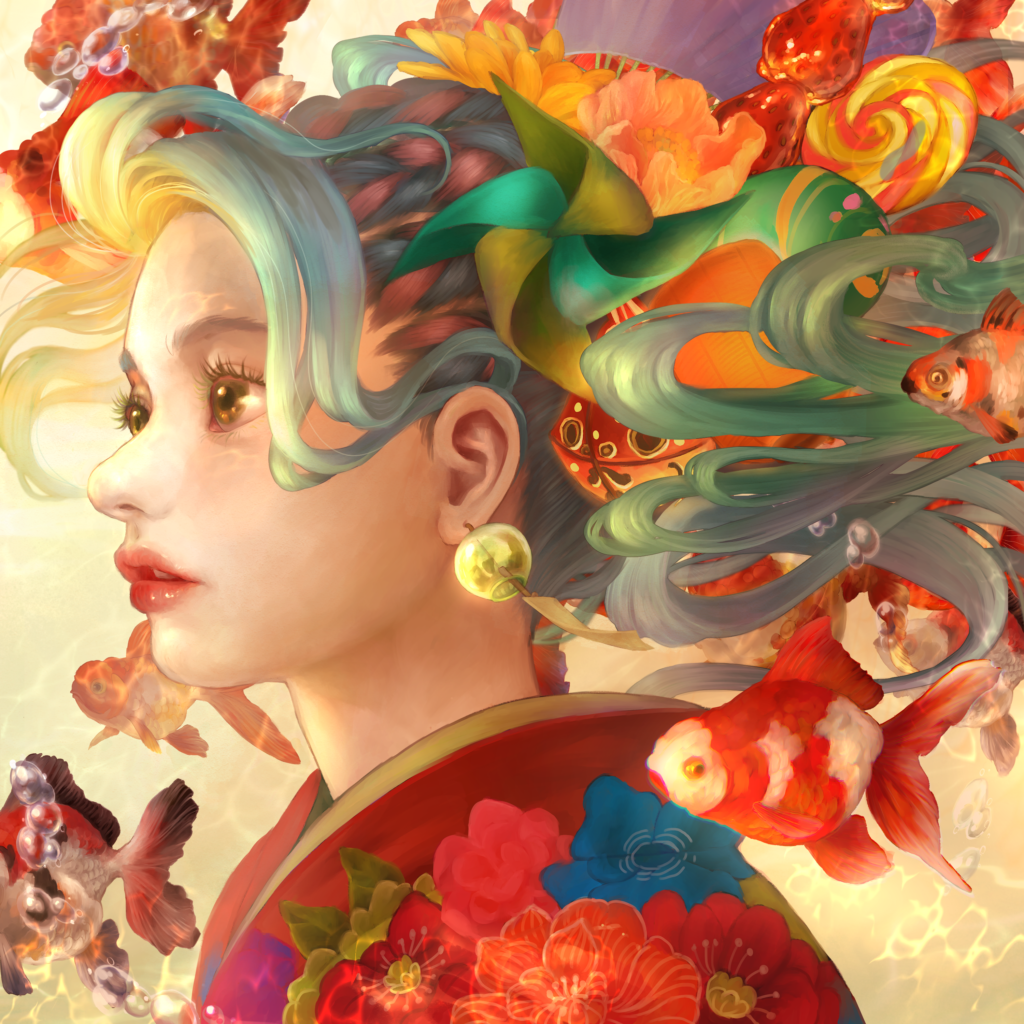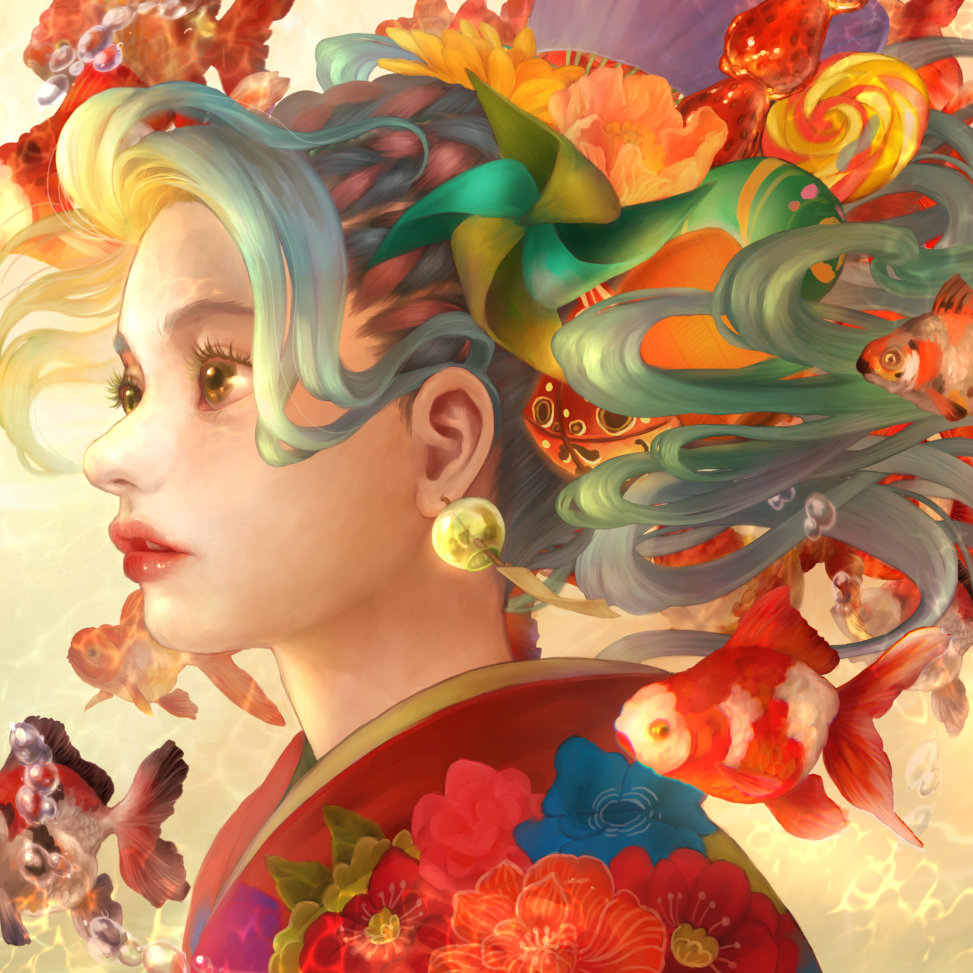
description
まだ夜も来ないうちに、少女は宵宮へと向かった。
光と闇が交差し混ざり合うとき、不思議なことが起こる。
黄昏時に出歩く高揚感と期待が彼女にまとわりついていた。
While night had not yet come, the girl went to the Evening Palace.
Strange things happen at the time of day when light and darkness mix.
The elation and anticipation of walking out at twilight clung to her.
あとがき
「たそかれ」は本来、「誰そ彼」→あなたは誰?という意味があり、その言葉が転じて「黄昏」となったと言われています。
昼と夜が交錯する黄昏時は、この世とあの世が交わる境目でもあり、魔物に遭遇すると考えられていました。すれ違う人に「誰そ彼?」と声をかけ、この世の人であることを確認していたのでしょう。
辺りが薄暗くなってきた時、彼女は宵宮(よみや)に出かけ魔物たちに目をつけられます。
宵宮(よみや)とは、土地やそこで暮らす人々を守っている神様を祀る神社の大祭の前夜祭のことで、本来は神事でしたが現在では露店や神輿、巫女が神楽を舞ったりと地域によって様々な催しがあります。
宵宮はお祭りの中でも特に華やかなもので、神の君臨を仰ぐと考えられていました。
今回、少女の頭には露店で出されているであろういちご飴や水風船、青森の金魚ねぷたが散りばめられています。
彼女のお祭りへの期待や高揚感が具現化されたものであり、それらが魑魅魍魎となって彼女にまとわりついているのです。
赤い金魚は魔除けの象徴であり、神社の鳥居の色を意識しています。
日本では古くから朱色への信仰があり、鳥居が朱色なのも神域への通過点を意味しています。
この絵は 鳥居をくぐり魔が浄化される瞬間を切り取ったものです。
金魚は、宵宮で祀られている神の化身なのでしょう。
彼女が「誰そ彼」と問いかけたものは、神様だったというお話です。
after word
The Japanese word “tasokare” originally meant “who are you?” which is said to have turned into the meant “twilight”.
Twilight was also the border between this world and the next, and it was believed that one would encounter demons. They would ask people passing by, “Who are you?” to confirm that they were from this world.
When the darkness falls, she goes to Evening palace (Yomiya)and the demons come to her attention.
Yomiya is the eve of the big festival of shrines that enshrine the gods that protect the land and the people who live there. Originally a Shinto ritual, it is now a variety of events depending on the region, such as stalls, portable shrines, and shrine maidens performing Shinto music and dance.
Yomiya was the most spectacular of the festivals, and it was believed that the gods would appear before the people.
This artwork, the girl’s head is covered with strawberry candies, water balloons, and lanterns from stalls.
They are the embodiment of her anticipation and exuberance for the festival, and they are all demons clinging to her.
The red goldfish symbolizes protection from evil and is conscious of the color of the torii gate of a shrine.
In Japan, there is a long-standing belief in the color vermilion, and the fact that the torii gate is vermilion also signifies the passage to the sacred area.
This picture captures the moment when the girl passes through the torii gate and the demons are purified.
The goldfish is probably an incarnation of the god enshrined at Yomiya.
The story is that what she asked 「Who are you?(Tasokare) 」was God.

